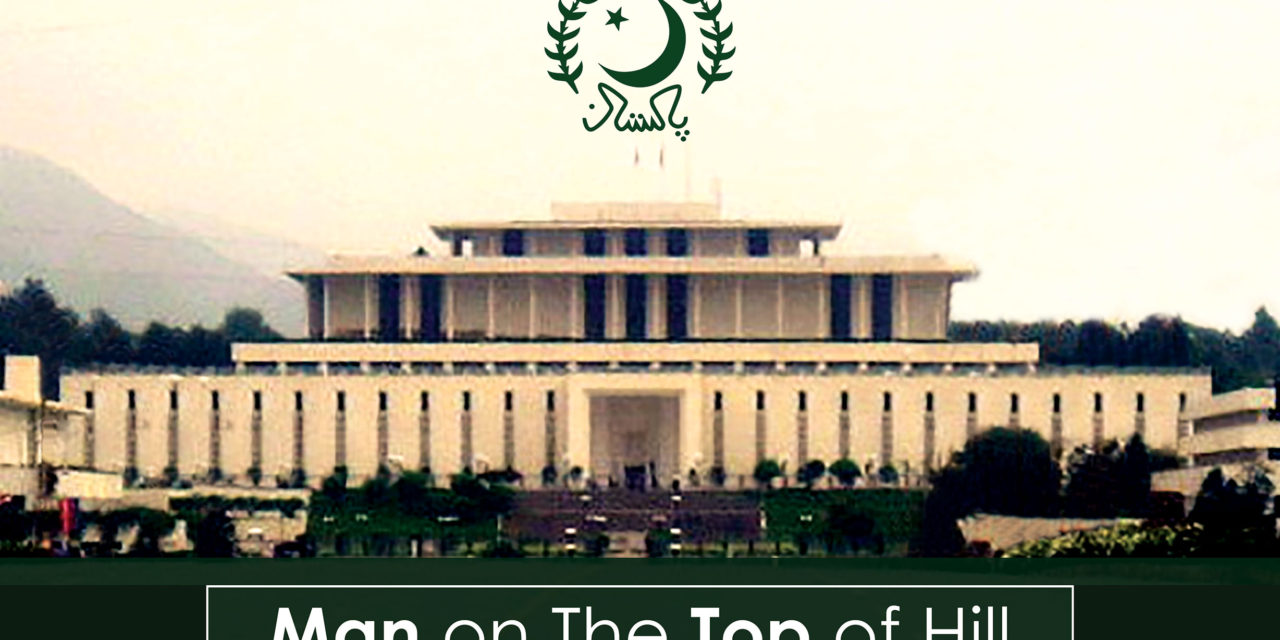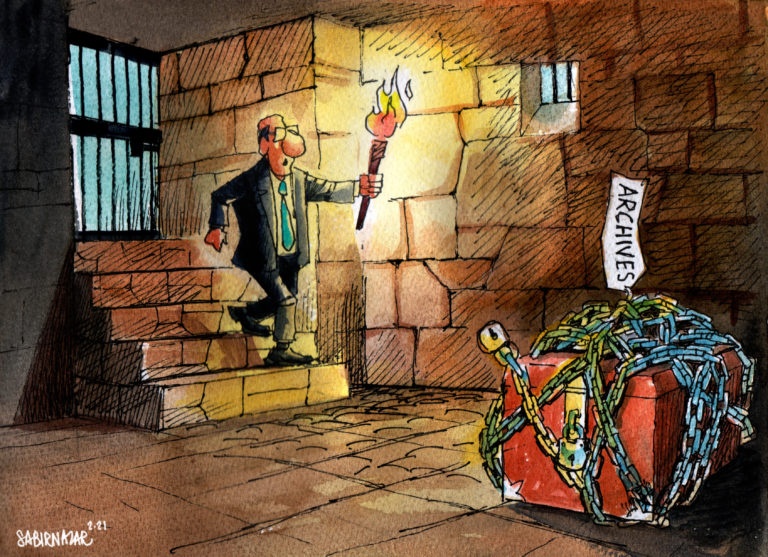The prestigious office of the President of Pakistan was created in the Constitution of 1956 as the ceremonial head of the State. The Constitution of 1956 was passed by the Constituent Assembly on 29th February 1956 and on 5th March 1956 the then Governor General, Iskandar Mirza-who had risen to the ranks of Major General in Indian Army (1920-1926) and later opted for Indian Political Service was elected un-opposed as the first President of Pakistan.
On 23rd March 1956 Pakistan became “Republic” but civil-military bureaucratic mind of Iskandar Mirza remained reluctant to facilitate first general elections and in October 1958 he conspired with General Ayub Khan to abrogate the hard earned constitution. In Ayub Khan he was looking for a new mentor but General Ayub packed him into exile.
Like Iskander Mirza, General Ayub Khan also hated popular democracy as a Western construct-only conducive to cool climate of Europe. So he designed a system of Basic Democrats to limit the scope of franchise. On 14th February 1960 he got himself as the president through the members of the Local Councils. Again he was the lone contender.
However on 2nd January 1965, the sister of the founder of the country, Mohtarma Fatima Jinnah challenged Field Marshal Ayub Khan. She was the candidate of Combined Opposition Parties, including religious parties. She secured 28,691 (35.86 %) votes against 49,951 (62.43%) in the Electoral College of 80,000 Basic Democrats. The Constitution of 1962 had converted the country from a parliamentary republic to a centralized presidential system.
In March 1969 General Yahya Khan took over as another president in uniform. In December 1971 Zulfiqar Ali Bhutto became the first civilian martial law administrator-cum-president. The Constitution of 1973 once again privileged the parliamentary republic and the then Speaker National Assembly, Fazal Elahi Ch was elected as the President. Khanzada Khan of National Awami Party was the candidate of the opposition.
In July 1977 once again country drifted towards martial law and in September 1978 General Ziaul Haq-the then chief martial law administrator became the self-appointed president. He sought legitimacy in December 1984 through a referendum. After his death on 17th August 1988, the then chairman, Senate Ghulam Ishaq Khan became the president. He was formally elected on December 12, 1988. Nawabzada Nasrullah Khan, Ahmed Jaffer and another less known candidate contested election against him. He resigned in 1993 and the then chairman Senate Wasim Sijjad became acting president.
On 13th November 1993 Farooq Ahmed Khan Leghari was elected as the president, Senator Wassim Sajjad was challenger to him. After his resignation in 1997, Justice Rafiq Tarar was elected as the president on 31st December 1997. Aftab Shaban Mirani and Muhammad Khan Sherani contested election against him.
In October 1999, Pakistan once again slide to martial law and General Pervaiz Musharraf became president, who sought legitimacy via referendum and on 6th October 2007 contested presidential election in uniform. After his resignation the chairman Senate, Mian Muhammad Somroo became the acting president. On 6th September 2008 Asif Ali Zardari was elected as the president. Traditionally the presidents have been ‘assembly eaters’ but during Asif Ali Zardari’s presidency all powers were given to the Prime Minister via the Parliament through the historic 18th Constitutional amendment. In 2013 Syed Mamnoon Hussain was elected as the president and now the country is set to elect its 13th president on September 4, 2018.


